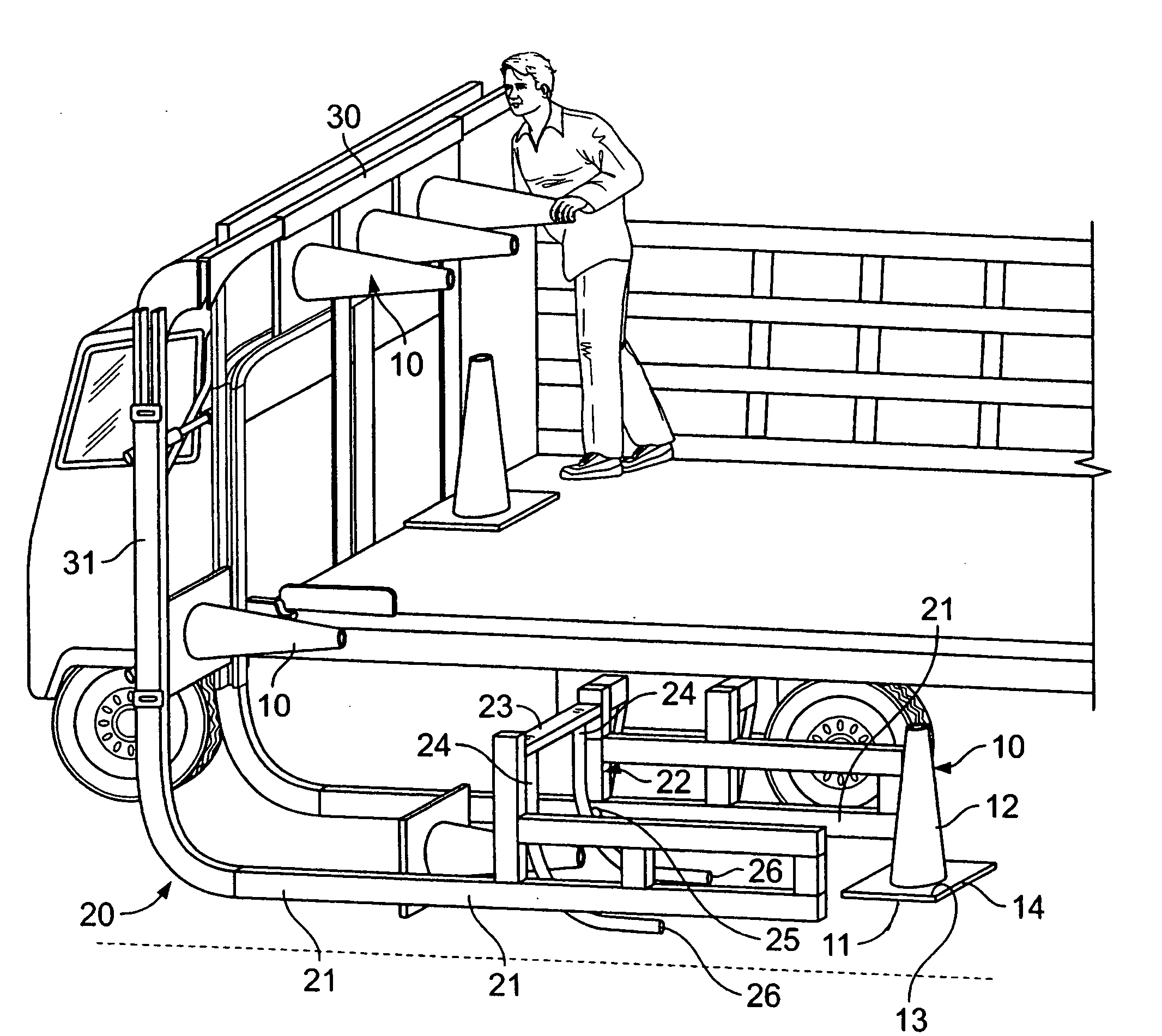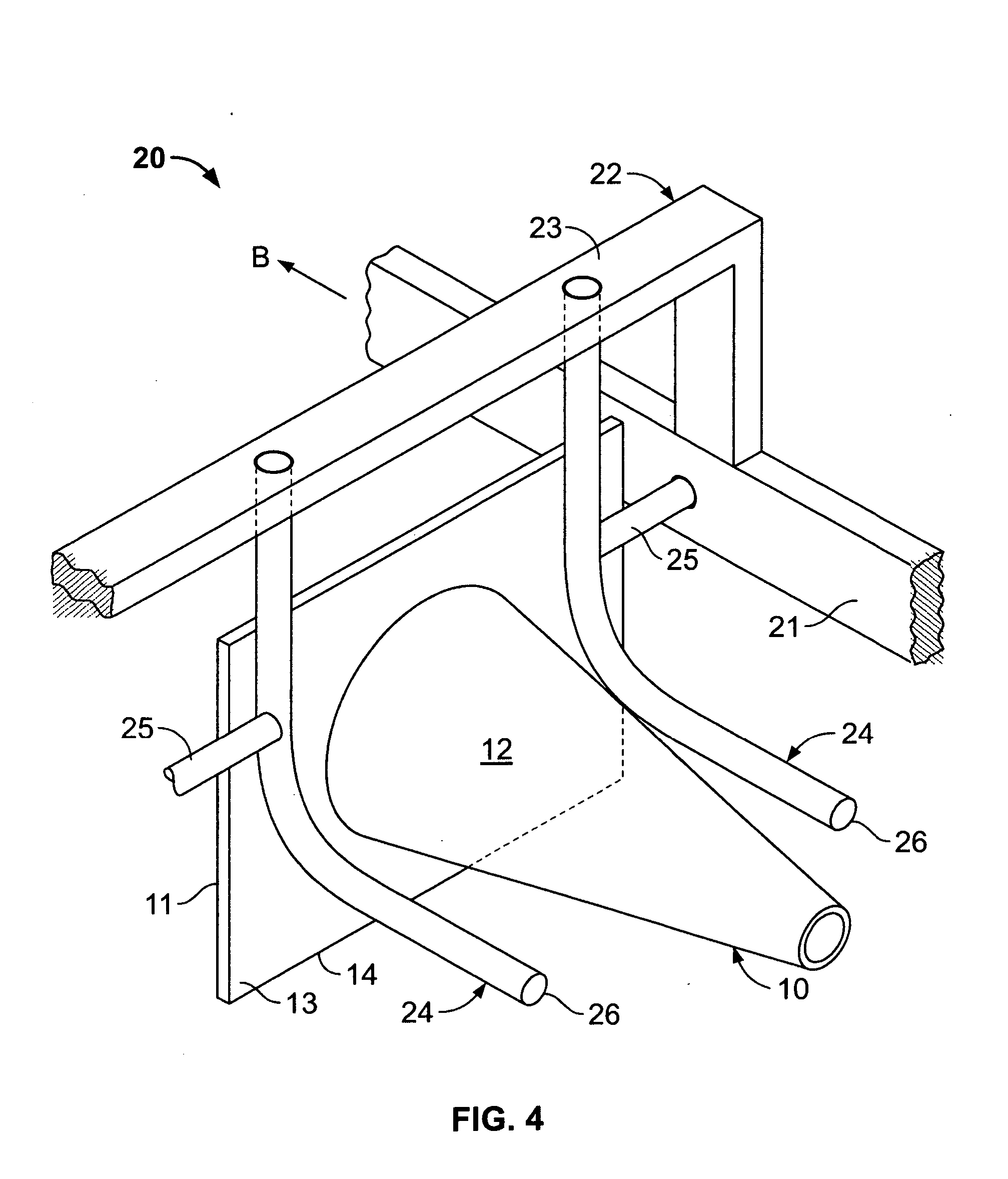Automated traffic cone handling machine
a technology of automatic handling and traffic cones, applied in traffic signals, applications, roads, etc., can solve the problems of unanticipated force on the part of the driver of the vehicle distributing the cones or collecting them, the flexibility of the handling process is very difficult, and the workers are seriously injured, including fatal injuries,
- Summary
- Abstract
- Description
- Claims
- Application Information
AI Technical Summary
Benefits of technology
Problems solved by technology
Method used
Image
Examples
Embodiment Construction
[0044] At the heart of the invention is a simple but elegant concept for handling traffic cones on roadway surfaces. This novel concept can be appreciated by reference to FIGS. 1, 2 and 3 where a traffic cone 10, illustrated lying on the roadway A in a horizontal position between the spaced apart rails (rails not shown in FIGS. 1 through 3), is brought to an upright position as the rails move in the direction of arrow B (see FIG. 2).
[0045] As can be seen in these figures, each traffic cone has a rectangular base 11 with an integral conical section 12 extending therefrom to the top to complete the cone, which is a common design for such cones. This hollow conical section does not cover the entire top 13 of the rectangular base, allowing the top of the base which is engaged for manipulating the traffic cones according to this invention.
[0046] In operation as the rails move in the direction of arrow B the conical section passes between spaced apart arcuate guides 24 (illustrated in p...
PUM
 Login to View More
Login to View More Abstract
Description
Claims
Application Information
 Login to View More
Login to View More - R&D
- Intellectual Property
- Life Sciences
- Materials
- Tech Scout
- Unparalleled Data Quality
- Higher Quality Content
- 60% Fewer Hallucinations
Browse by: Latest US Patents, China's latest patents, Technical Efficacy Thesaurus, Application Domain, Technology Topic, Popular Technical Reports.
© 2025 PatSnap. All rights reserved.Legal|Privacy policy|Modern Slavery Act Transparency Statement|Sitemap|About US| Contact US: help@patsnap.com



